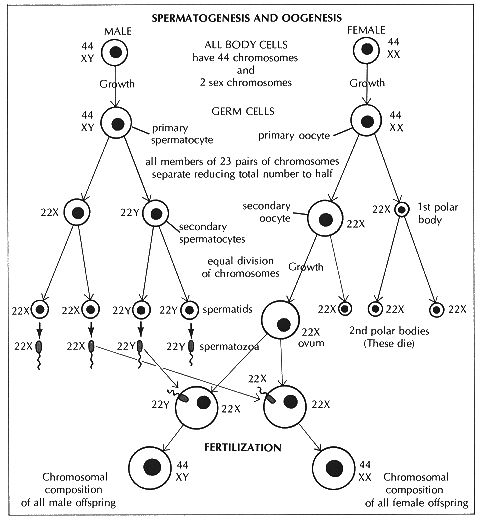|
4.1 CONCEPTION
It used to be said of a pregnant woman that she had "conceived," or that a "conception" had taken place inside her body. Today, these terms are rarely heard in everyday speech, and many people may now find them pretentious and melodramatic. Nevertheless, scientists still fall back on the word "conception" as a matter of course when they want to refer to the beginning of a new life or the beginning of the existence of a new individual. However, these seemingly simple definitions cover a very complex phenomenon that even now is far from being fully understood. Consequently, not all scientists use the word "conception" in the same way.
We know that a woman's pregnancy results from a combination of several biological processes. Among these are:
• The union of a male and female sex cell which produces a new single cell called zygote. This process is called fertilization.
• The growth of the zygote by cell division, resulting in a hollow ball of cells called blastocyst. This process is called segmentation.
» The attachment of the blastocyst to the lining of the uterus. This process is called implantation.
If anything goes wrong with even one of these processes, no pregnancy can occur.
Still, for certain scientific reasons many developmental biologists prefer to speak of a conception as soon as the process of fertilization is completed. On the other hand, some reproductive physiologists believe for their own scientific reasons that a new life begins with the process of implantation. For them, no conception occurs unless the fertilization leads to pregnancy.
These different scientific approaches to the same problem may sometimes confuse the layman who tries to learn at what particular moment a human life begins. However, he may well remember that the advances of modern science have also shattered many traditional assumptions about the exact moment of death. With our increasing scientific knowledge, the beginning as well as the end of life have become more difficult to define. Indeed, it is now very hard to pinpoint any specific moment for either. It seems that we need to know still more (and develop a more precise terminology) before we can really answer these difficult questions.
 |
THE DETERMINATION OF SEX
The chart first compares the production of male and female sex cells and then shows the possible results of fertilizations.
1. Spermatogenesis and Oogenesis
While one primary spermatocyte eventually gives rise to four mature spermatozoa, a primary oocyte gives rise to only one ovum. The minute polar bodies which are formed in the process of oogenesis simply die and disintegrate. (See also pp. 29-30 and 45.)
2. Fertilization
All mature ova carry an x-chromosome, but the spermatozoa carry either an x-or a y-chromosome. Thus, the union of a spermatozoon and an ovum (fertilization) can result in either one of two possible new cells: one growing into a boy (the xy-combination) or one growing into a girl (the xx-combination).
The following paragraphs offer a summary of what is known today about the main biological processes that contribute to the reproduction of human life.
|

